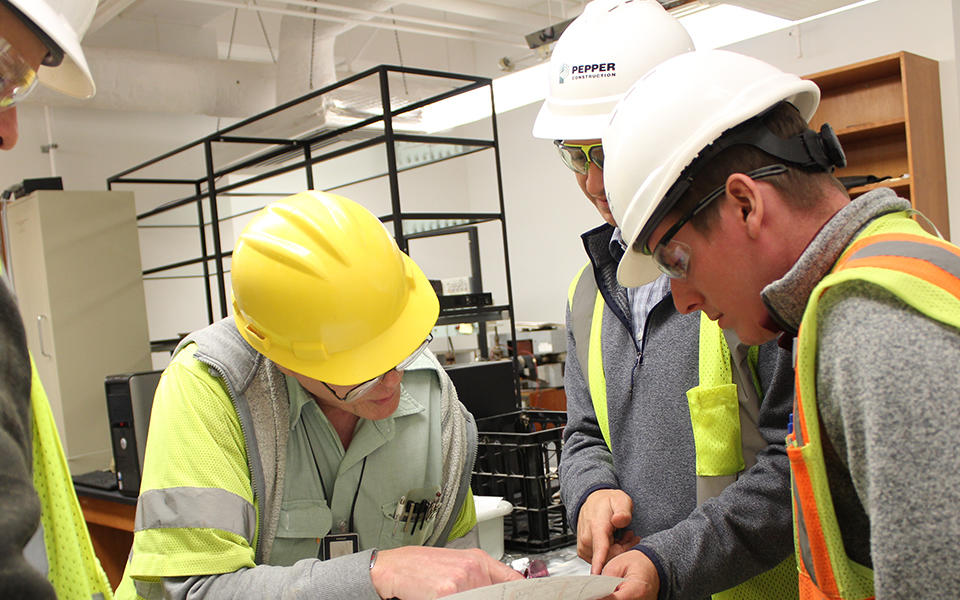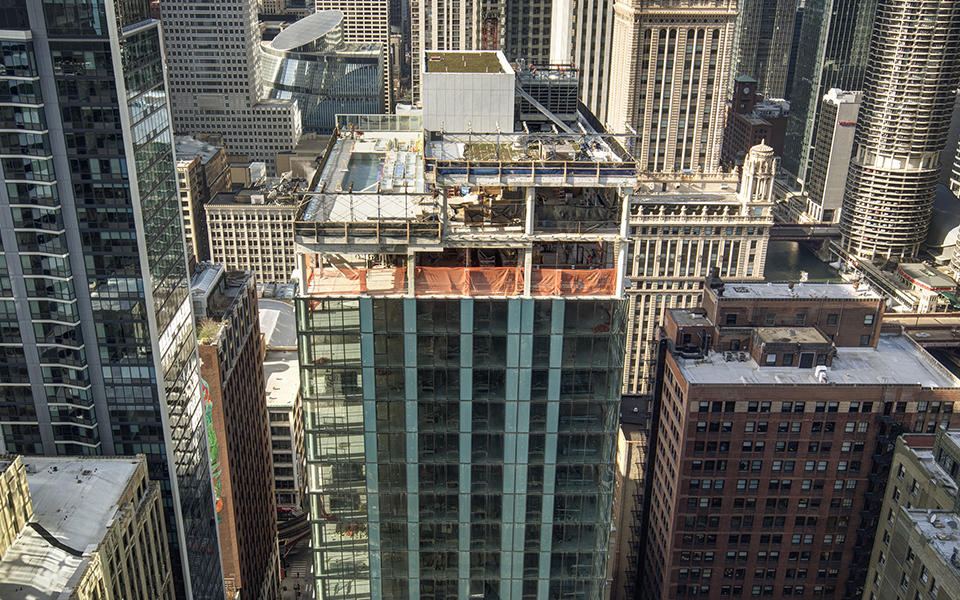Preconstruction
When evaluating the needs and options for your facility, one of the primary deciding factors is cost. Before proceeding in any direction, you have to know what you can afford. Too often, the owner starts working through the design process and is then asked to scale back their expectations once real costs are introduced. The further along in the design before the real numbers are revealed, the more devastating the news.
The design team should be able to provide a good macro-level number based on similar projects, which can help you through an internal go/no-go process. But you will not be able to raise funds, secure financing or position yourself in the market based on their estimate.
Budgeting for a design concept typically starts with simple math – a basic cost range based on total square footage. At the start, the owner has a budget on one side of the scale and a vision on the other. The challenge is to get the two sides to balance and deliver the right project at the right price. There are three options to bring alignment:
01. The design dictates the cost. (Can anyone really afford this?)
02. The budget drives the design. (The owner’s greatest fear.)
03. The design and budget influence each other. (Keep reading.)
How do you ensure you start with a viable estimate and end within your established budget, without sacrificing the design? By understanding the factors that influence the cost and engaging the right experts to offer ideas toward a workable solution. It’s a give-and-take relationship on both ends.
Accurate and detailed estimates come from current knowledge.
The American Institute of Architects (AIA) explains, “Detailed construction cost estimating is a skill generally outside the realm of architects’ professional expertise. Estimating requires detailed knowledge of construction materials, methods, sequence, and labor. Contractors acquire this knowledge through direct construction and cost management experience and daily interaction with material suppliers, manufacturers, subcontractors, and workers.”
We have worked with many clients who understand the value of early contractor involvement. In fact, more and more, we are brought on board at the same time as the architect to help build the owner’s budget as they are developing the program. This is a best practice!
Invariably there will be more variables than you thought to consider.
There is no one-size-fits-all answer. Every project is different, and the design is only one factor in the cost of construction. Many costs are relatively consistent, such as materials, labor and equipment rental. Design and construction management fees, permitting, bonding, insurance and inspections are often accounted for, but if you want a budget you can take to the bank, you have to account for all costs. Identifying and controlling the underlying costs associated with the process of construction are the keys to predictability.
Site work - Often, it’s the work that happens before the project comes out of the ground that is the riskiest and hardest to anticipate. Associated costs include infrastructure and site work, which can vary widely based on location and parcel, soil conditions and utility access.
Local regulations – Local ordinances and codes dictate specific materials and methods that can or can’t be used, which can make some costs fixed and cause serious exposures for a project team unfamiliar with these requirements.
Existing conditions - When working in or around an existing structure, there may be utility lines running under the site, connections to mechanical and electrical systems or elevation issues to address, whether that happens through construction or in the design.
Safety protection and site cleanliness – This includes costs associated with housekeeping, keeping the project team safe and separating construction activities from the public. Not implementing the correct measures presents costly risk exposures.
Schedule and logistics – The schedule has both direct and indirect costs on the project, from expediting and accelerating activities, to sequencing trades in order to share scaffolding or ordering materials for just in time delivery.
Timing – The time of year or season in which activities take place can have a significant impact on the cost of construction, from the availability of materials to the ability to perform the work in certain temperatures and conditions.
Manpower availability – Trade availability not only impacts cost through competitive pricing, but it can also affect the cost through schedule impacts. Specialty work requires a higher skill level and expertise and demands a higher rate. Some projects are incentivized to use local or disadvantaged workforce.
Market conditions – The time between the start of design and procurement can last more than a year, in which case inflation can come into play. Additionally, commodities pricing can have both direct and indirect impacts, whether tracking the cost of steel or fuel prices.
Current market pricing conditions: Your contractor should be monitoring many market conditions to ensure that all pricing is up-to-date. Direct conditions include commodities, labor rates, worker availability and potential competing projects. Other markets can also impact construction. For example, the current reduction in oil production has caused a reduced need for steel by oil refineries, which has benefited the construction industry with steel being more readily available and at a lower cost. As we price projects today, we are looking at steel as a potentially more cost-effective option when the facility design can support the utilization of steel. However, not long ago, we were reversed in this opinion and looking to concrete structures as a less expensive option. By constantly monitoring these conditions, as well as others, contractors can provide owners and design partners the most current and accurate pricing and building options. In our experience, architects and cost consultants typically do not have the depth of our resources to monitor and incorporate real-time market conditions for current pricing.
Owner purchases – Items like furniture and fixtures are sometimes excluded from the construction manager’s scope; however, coordination of deliveries is still required.
The advantages of early contractor involvement
It’s natural to read through the list above and think of costs averted. While there are advantages to detailed planning that accounts for all potential project impacts, the real advantage of early contractor involvement is the owner’s enhanced control over receiving the project they want.
How? It shifts the emphasis from subtraction to addition and allows you to control both sides of the scale. Through constructability review, budgeting strategies and cost and materials analyses, contractors offer solutions that can improve the project.
Constructability review – The way a project is planned can affect the cost, whether figuring out how to keep your business running during a renovation instead of shutting down operations, or proposing an alternative installation process, like prefabrication.
Prefabricating systems is faster, cheaper and delivers a higher quality product. Videos have gone viral showing entire rooms being prefabricated, delivered and installed. Even for those who don’t prefabricate entire rooms, today most projects involve some type of prefabricated pipe installation or a component, like the patient room headwalls featured in this video. As owners see the value of prefabrication, goals are no longer being set based on what we prefabricate but how much. These more aggressive goals are a challenge to both designers and contractors to turn the process on its head - not identifying prefabrication opportunities once the design is complete but changing the design to capitalize on prefabrication - to realize even greater savings.
Target Value Design (TVD) – According to the Lean Construction blog, TVD projects are delivered 15-20 percent below market price, while providing more predictable outcomes with less contingency. It is a productive process where the design and construction teams work side by side. The TVD process assigns a target value to each individual component of the project, such as drywall and flooring, and then tracks the cost on a unit price basis against the design. This provides the owner and the design team with accurate information when selecting systems and finishes and a clear understanding of how each selection will impact the final budget.
Systems, materials and life-cycle cost analysis – It used to be that each of these types of analyses were completed separately, but as we become smarter about the health of our buildings and systems, we’re taking a more holistic approach. Smart clients are starting to look at how the components work together and consider the long-term operating costs along with first costs, particularly as energy efficient systems come down in price. Newer tools and technologies are allowing contractors to assist with this longer view.
For example: On a recent healthcare project, we analyzed different flooring types and reconciled that with a life-cycle analysis the hospital had done on the required maintenance and replacement for each flooring option. Working side-by-side with the hospital, it was determined that despite being the least expensive in initial costs, the vinyl tile flooring option actually had the highest life-cycle cost and was the most expensive option to the hospital. The selected no wax rubber flooring, although more expensive upon initial installation, had lower maintenance and replacement costs and would save the hospital money throughout the facility’s life cycle.
Getting past the clouds of uncertainty
The process of project cost estimating has remained virtually unchanged for decades. While electronic takeoff tools sped up our hand takeoffs and spreadsheets sped up our math calculations, the work is still done by hand.
It’s time-intensive, and against the beat of the “faster, better, cheaper” mantra of today’s demands, our industry has experienced breakthroughs that are allowing us to scale our efforts.
Increased collaboration – Owners are seeing the benefits of more collaborative project approaches, from design-build, to design-assist and even integrated project delivery (IPD). All of these apply the principals of lean construction and emphasize the value of the Last Planner®. Involving key trades during preconstruction shifts the culture from a request for information (RFI) / “not my role” mentality to an inclusive environment where those closest to the work have input in how the work is budgeted and completed.
Technology - Our craft is seeing a drastic change that will only make us faster and better. Through the early use of Building Information Models (BIM) and reality capture we can generate project quantities, which produce faster and more accurate budgets and allow all team members to more readily see the project three-dimensionally and fill in missing items. With this quickness comes the ability to get more accurate information in front of owners to make quicker decisions for the project. Building the models earlier in the process also improves schedule and logistics accuracy.
In our ever-changing world there are many reasons to partner with a general contractor as early as possible. Whether identifying current market pricing conditions, utilizing model based estimating, assessing high performance options, optimizing design decisions to maximize schedule opportunities or working through local jurisdictional issues, a general contractor’s early involvement can both negate potential issues and improve the value of your investment. Contractors serve an important role of providing a bankable estimate that owners can use to secure financing.




